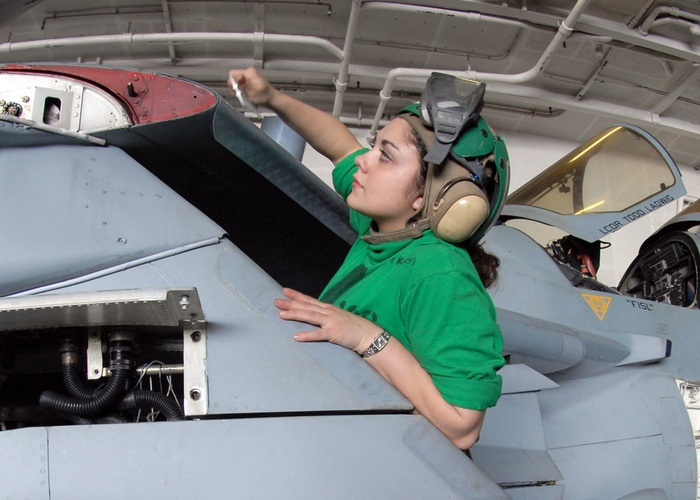Whether an old airframe is on the edge of retirement or a brand-new jet, a robust logistics chain, and parts supply are paramount.
Greenwood Aerospace is your leader in government procurement, aircraft and parts storage and distribution, and military and defense contracting. Our expertise and services include the following:
Procurement of
- Fixed-wing aircraft and associated support
- Aircraft parts & accessories
- Military aircraft parts
- Storage and distribution of parts and supplies to your organization. We will operate as your private warehouse and distribution network.
This is only a sample of our services and capabilities.
Learn more about our services for the defense and military industries. For additional information, you can also contact us here or by emailing sales@governmentprocurement.com.
Government Aircraft Maintenance Contracts: An Essential Aspect of Aviation Safety
Aircraft maintenance is the cornerstone of a safe and efficient flight operations department at any agency, from the military to the FAA, to the numerous other governmental organizations that keep in-house aircraft fleets. Government aircraft maintenance contracts are the solution for organizations to secure talented and skilled aircraft maintenance professionals without training them in-house. And this is a significant departure from the past: the military, in particular, had uniform service members acting as mechanics on all airframes, including the training fleet and VIP transports. Let’s find out how government aircraft maintenance contracts are changing all of this in the modern age.

Overview of Government Aircraft Maintenance Contracts
Government aircraft maintenance contracts are just what the name suggests: they are contracts that the government drafts and deploys for aircraft maintenance on government-owned fleets. Now here’s the deal: sometimes, they are whole-airframe contracts where all maintenance, from line maintenance to labor-intensive back-shop maintenance, is conducted. But not all government aircraft maintenance contracts are for the entire airframe. Sometimes the contract is defined for a specific set of tasks or duration. For instance, if the auxiliary power units (APUs) are being upgraded on the RC-135 platform (for example), a government aircraft maintenance contract will likely be drafted and executed to do the work. Why?
First, it is way outside of the scope of the permanent maintenance personnel. Second, pulling away that many technicians from the flying missions is not practical.
What Kind of Maintenances?
Other areas of government flight operations that employ government aircraft maintenance contracts are for line maintenance. For instance, the Air Force’s entire training fleet is maintained through government aircraft maintenance contracts. This encompasses hundreds of aircraft across several states and bases. These include:
- T-6 Texan II
- T-38 Talon
- T-1 Jayhawk

The maintenance delivered in these contracts is comprehensive; all systems are inspected, serviced, and repaired according to manufacturer specifications. Some examples of required maintenance items are
- Preventive Maintenance
- Maintenance Inspections
- Servicing Equipment
- Acquiring and Maintaining Aircraft Parts
- Airworthiness
- Deferred Discrepancies
- Equipment Lists
- Maintenance Analysis
- Post-accident Procedures
The Federal Agency General Maintenance Manual is the definitive guide to handling maintenance.
The Army does this same thing with its fleet of fixed aircraft, which include
- C-12/RC-12
- C-26
- UC-35
- C-37
All Army fixed-wing assets are supported with government aircraft maintenance contracts.

Types of Aircraft Contracts
The government awards unbelievable amounts of contracts, more than you can really comprehend. In 2015, around three million contracts were awarded by the government.
Not surprisingly, aviation contracts comprise a large percentage of the overall government defense contract process. Hundreds of bids posted daily have to do with the aircraft industry.
Most of these are created by the DoD, and their categories include
- Structural components
- Aircraft Accessories
- Ground handling equipment
- Maintenance contracts
- Modifications/compliance technical orders
Structural component contracts are what we talked about earlier: the APUs, engines, or some other structural component is being modified or upgraded fleet-wide. Again, it is not realistic or cost-effective to pull line maintainers off of their jobs to execute structural upgrades or component repairs, especially if the repairs must be done by a back shop that has a small cadre of technicians. For instance, at an Air Force flying wing, there may only be 15-20 machinists in the machine shop for the whole wing of the aircraft. Pulling five machinists (or sheet metal technicians) away for a structural repair on the entire Wing of jets like the A-10 wing repair program would have serious consequences for fleet readiness.
Aircraft accessories are another time when government aircraft maintenance contracts make a lot of sense. Take the Sniper pod placement on the B-1B program. The active B-1 fleet is around sixty jets, each requiring extensive modification to integrate the Sniper pods regarding electrical systems, electronic integration, and structural modifications. A government aircraft maintenance contract is the most economical solution to do these mods while ensuring the rest of the fleet stays in the air.

The entire Air Force flying mission really revolves around ground handling equipment. Without aircraft ground equipment (AGE), it all comes to a grinding halt. From the simple Crew Chief stands used for wiping windscreens and every other miscellaneous maintenance work to hydraulic test stands (“mules”), nothing happens without AGE.
While a lot of maintenance and repairs happen in the AGE shop, they have limitations for extensive tear-down and repairs, or especially fleetwide modifications. This could entail thousands of units service-wide, which is a workload that the uniformed AGE technician workforce cannot absorb.
Process of Awarding Government Aircraft Maintenance Contracts
So, how are government aircraft maintenance contracts awarded? There a few steps in the process, so let’s take a look at them:
- Identify this need: whichever government entity is involved identifies the need for a government aircraft maintenance contract. It could be routine maintenance, repairs, or extensive overhaul work.
- Requirement definition: the organization then defines the specific requirement of the contract. This is the scope of work, expected performance standards, and project timelines.
- Solicitation: the flying organization then initiates a solicitation process to interest bidders. This usually involves issuing a Request for Proposal (RFP), Request for Quotation (RFQ), or Invitation to Tender (ITT) document. The solicitation document contains the outline for requirements, evaluation criteria, the terms of the contract, and any submission guidelines.
- The bidding phase: all interested companies will submit their proposals/bids responding to the formal solicitation. Bids should include technical proposals that detail the bidder’s capability to perform the tasks outlined in the solicitation. They also express how they will fulfill the maintenance requirements.
- Evaluation phase: the requesting organization reviews the submitted proposals based on the requirements outlined in the solicitation. The solicitation must be written with everything required included because the evaluation phase cannot change it without starting over from scratch.
- Contract award: after evaluating the proposals, a contractor is selected. The award decision may consider various factors, including the bidder's technical expertise, financial stability, past performance, and the proposal's overall value.
- Contract negotiations: once it is awarded, negotiations are entered by all concerned parties to go over contract terms, pricing, performance requirements, milestones, and payment.
- The final step is contract execution. The contractor proceeds with providing services according to the contract specifications.
How to Find Bids for the Federal Government
The next question is, where can contractors find bids for federal government aircraft maintenance contracts? The best place to start looking for contracts is SAM.gov. This official U.S. government website lists thousands of contract opportunities, assistance listings, wage determinations, and more. These can be tough waters to navigate, so procurement organizations like Greenwood Aerospace exist. Another place to look is the Defence Logistics Agency. The DLA is the prime mover for contracting opportunities, so make sure to check out their acquisition and contracting website. DLA is mostly used for purchasing parts and supplies, while SAM.gov is for finding contract opportunities.
What Role Do Aerospace Companies Like Greenwood Play In This?
Government procurement companies like Greenwood Aerospace are well-versed in what it takes to be successful in the government aircraft maintenance contract scene. We help your company navigate to the government contracts that are the best fit for your organization and are the most likely for you to win. Instead of a shotgun approach, we can help you focus like a laser on the solicitations that matter.
Conclusion
Contractors conduct an enormous swath of government aircraft maintenance. From all military branches to the FAA to many others, flying operations everywhere are supposed by maintenance contracts. There are many different kinds of contracts, and the process is sometimes difficult to execute. Greenwood Aerospace is your company's top ally in winning government contracts. Ready to start getting those contracts squared away? Give us a call, or start an online quote today!


.svg)


.png)


